| Zeitschrift Umělec 2001/5-6 >> Territories of Sound | Übersicht aller Ausgaben | ||||||||||||
|
|||||||||||||
Territories of SoundZeitschrift Umělec 2001/5-601.05.2001 Jonathan Marshall | sound | en cs |
|||||||||||||
|
During a recent trip to Europe and America I mused on the sonic experience of travel. A low, white noise buzz permeates the hermetically sealed cabin, a windy physical and sonic tremor which one can cover (but not altogether escape) by judicious use of the head phones. The dialectic between the intermittent tremor of the vehicle and the sonic envelope of listening describes the experience of modern travel. Sound and space are constructed so as to normalize traveling, to reduce the spatio-temporal shock of movement by wrapping one in a constant, FM acoustic space that represents everywhere and nowhere at once. The airplane is the paradigmatic “non-place” of contemporary experience, a spatial shell devoid of specific character that lies between actual geographic spaces and times. Like the station, the shopping mall, the anonymous hotel room and even the recording studio, the airplane (and the score that accompanies it) is a standardized realm designed according to universalized models of efficiency and flow. Vectors of human, economic and cultural traffic are funneled in and streamed out. The full terrifying vision of space, its expansive illimitability and variation, is collapsed and contained by its mediation through familiar, universalized places like the transit lounge or McDonalds, their anonymity sustained by soothing, familiar muzak. These non-places are defined by their lack of geographic fixity or sonic specificity. They are like Tardises of Dr Who lore, dotting the landscape and enabling us to carry our own space and sense of place with us as we negotiate the potentially unfamiliar. The space of travel is a layered space, of sounds on top of and contained by one another, of different ways of feeling at home hierarchically arranged and stratified. I listen to the headphones and stare distractedly out of the window at gaseous matter, barely aware of the hissy, foamy sound of unseen motors, air circulation and diffuse structural stresses.
The way in which contemporary travel contains spatial complexity and variation has been allied to both utopic and distopian conceptions of global economics. On the one hand, the spatial universalism and lack of fixity of non-places like the super-highway offer a sense of freedom, of the transcendence of spatial, economic and psychological restrictions. This McLuhan-esque vision is expressed in such popular works as “Around the World” by French house group Daft Punk. The cheesy mantra of the title is repeated endlessly as though the global transmission of its radically deterritorialized sounds, devoid of acoustic or cultural specificity, offers a positive end in itself. Sound travels around the world through the non-place of the modern nightclub, a far cry from the fiercely territorial, marginal black and gay venues from which disco and house first emerged. Space, video and sound are not, however, as free as the experience of the WASP consumer or bourgeois backpacker might suggest — “as the many Rodney Kings of the world will tell you,” Samuel Collins points out. The contemporary experience of travel, the non-place, global capitalism and “Super-Modernist” architecture (the same efficient 7 Eleven blueprint deployed in old Paris or modern Johannesburg) are based on an indifference to spatio-cultural complexity and difference. The construction of the non-place facilitates the “free” exchange of goods — individuals, passengers, culture and capital — across boundaries in ways that benefit some more than others. The ubiquitous use of looped pygmy vocals for example — popularized by World Music group Deep Forest as a strategy for the representation of Rosseau-esque ideals of “ancient primitive wisdom” — has had little if any positive consequences for those sampled and disseminated in the realm of “free” musical exchange. In the context of this metaphoric (and sometimes literal) strip-mining of cultural capital from the margins of global power, the reterritorialization of space, sound and the bodies that move through them takes on political significance. Sound and the architecture of the body act as sites for the dramatization and contestation of global commodity exchange. The work of French/UK electro trio Battery Operated (Chases Through Non-Place and Vecuum) offers an example of these practices. Their music draws upon the history of music in the workplace, commerce and architectural theory, leading them to describe their acerbic, grating funneling scores as “inverse-muzak.” Unlike the acoustically “pure” sounds of house music (and French house in particular) Battery Operated explore the simulation and deformation of acoustic space. This is not the clean, abstract electro sound of Brian Eno’s Music For Airports or Kraftwerk’s Trans-Europe Express, but the mulched, muddied, screaming tones of contemporary electro-acoustics. The only “space” that one imagines to accommodate “Around the World” is that of the anonymous club or the video’s flat images of equally anonymous bodies moving in unison to the global beat. The extruded noises of Battery Operated though create a complex virtual geography defined by linkages across realms, and squashed bleed-throughs from one acoustic space to the next, of environments varying from the oppressively dense, shattering overload of the distopian city, to abstract yet disquieting non-places characterized by dispersed, uneven muzak. Battery Operated deploy the metaphor of “the chase” to describe these spatio-sonic deformations. The intermittent drum’n’bass beat establishes a musical pattern which metaphorically charges and stumbles through the score, pursued and opposed by other sonic textures but never fully arrested by them. This is not the idealized vision of travel as facilitated by the non-place, but rather a representation of the sonic violence that such a conception entails. For space to collapse into the familiarity of the universalized non-place, other sounds must be hammered out of one’s consciousness. The listener must succumb to the desire of the muzak programmer and fail to notice the variations and localized characteristics of the realms one moves through. Battery Operated encourage the listener to cease to simply be seduced or distracted, and to listen carefully for the patois of the supermarket patrons or the sounds of an ocean storm upon the roof — to “say no to muzak” as the dominant sonic presence within social, spatial and acoustic environments. Battery Operated’s net site (www.batteryoperated.net) provides a critical gloss on these sonic interventions in global transit and how this translates to musical tropes like the intermittent beat. The oppositional qualities of the rather different aesthetics of drum’ n’bass, hip-hop and Afro-American music are invoked in this context to justify a political reading of the otherwise chaotic sounds produced by Battery Operated. While this has a certain merit for those who catch the references, it fails to account for the most striking aspect of Battery Operated’s strategies — namely the deployment of noise. The manipulation and invocation of musicological history and its elements makes up the language of music. Sound on the other hand is pre-linguistic. Isolated sonic events devoid of context, place or musical order have no inherent meaning in and of themselves. Noise therefore has the potential to act as a pre-linguistic babble, an amorphous onomatopoeic jumble similar to the speech of babies. When realized through a powerful sound system such as Battery Operated used in Melbourne Australia, this has the potential to disrupt not only the global implications of muzak, but musical logic itself, generating a sonic assault so strong as to constitute raw anti-meaning. Only such a radical challenge to sono-musical structures can come close to hinting at the immeasurable variation of space, time, geography and culture that travel negotiates. It is not therefore at the level of music that Battery Operated most forcefully contest the ideal of the non-place, but rather at that of sound itself. The aim of muzak is to marginalize noise, the uncontrolled, that which has the potential to divert the individual from such acts as shopping in the mall, work in the office, or indifference in the train carriage. To return noise to the act of social movement and travel is to break down the walls of the non-place and let the full, illimitable potential of cultural difference, space and politics into one’s consciousness. Once one has become aware of the hiss in the headphones, the idealized acoustics of FM transmission can no longer hide the other sounds and sensations emanating from both inside and outside of the aircraft. To take off one’s headphones and listen to the jetstream takes on a political content here, announcing the individual’s refusal to go with the disinterested flow which is facilitated by the non-place and the vectors it houses. If a refusal to “go with the flow” of global economics and its sonic manifestations constitutes an act of resistance, then theatre company Not Yet It’s Difficult offers a somatic version of these strategies. NYID work with the forms of space sustained and endured by the body. Director David Pledger’s physical explorations may be thought of as an “acoustics of the body.” Just as sounds bounce off hard surfaces or are deflected by softer ones, causing noises to inhabit each space in a characteristic way, so the sensorium of the body is affected by the materials about it. It is no accident that Pledger has been using the scores of Japanese minimalist Ryoji Ikeda for recent performances. The rhythms of the body are highlighted, its contingent features and responses are dramatized and manipulated. Pledger too uses the metaphor of the chase to explore the potentially oppressive effects of social and cultural space. NYID’s most recent work, Scenes From the Beginning of the End, begins with the choreographed flight of the performers from the startling, red emptiness of the desert environment near Lake Eyre projected behind them into another apparently uniform space — the “cultural desert” of Australian suburbia. In the literal desert a certain abstract poetry possesses the body, a potential openness which is nevertheless threatening for these urban subjects (black or otherwise). As they charge down the road however an even more disturbing threat becomes manifest: the hyper-mobility of urban spaces and highways, an excess of roads, signposts, vehicles and urgency. The bodies quake and gesture in response. Little wonder then that so many Australians come to rest in the suburbs, a region characterized by a quiescence and seeming sameness which enables one to escape both the threat of empty space and the overabundance of urban space. Though the suburb does not promote flow or movement in a significant fashion, perhaps its appeal lies in it being the ultimate non-space of contemporary Australian experience. Special thanks to Paul Jackson ADDENDUM: September 11 witnessed a brutal caesura in the non-place of contemporary aero-travel and Western capitalism. The sonically standardized models offered by the non-place and traditional muzak were however quickly marshalled to fill the void. The World Trade Center attack has been endlessly rehearsed and discussed as an event without precedent, as though multilingual murmurs and screams have not been incessantly emerging from American cities, the Middle East and elsewhere. The Bush administration has attempted to cover this gap in public historical consciousness, this interruption in the flow of capital, sound and lives, with national anthems and allegedly unanimous, orchestrated soundings of support for the state-sponsored terrorism proposed as a just response to the crime. Sonic strategies have ranged from congressional applause to pop music benefits, or disturbingly uniform reportage endlessly repeating the same dialogue. Images of the towers, shot from every angle, have been widely distributed and transformed into a newly standardized iconography of 21st century Western tragedy. Yet few of the original recordings were accompanied by sounds. Where sound was included, it was that of the spectator reacting — not that of the event itself. Despite governments and commentators attempting to provide a soundtrack to this disaster, the attack continues to lie at the boundary of human comprehension precisely because no sound can match it (TV news’ saccharine string scores notwithstanding). Here at least the sonic non-place has yet to become established and we have space to reflect and mourn. Perhaps it is time to listen to the clash of languages emanating from regions such as Palestine, rather than forcing these voices back to the sono-political margins by blithely returning the headphones to our ears. Net sites: http://www.batteryoperated.net http://werple.net.au/~dorobo/dorobo.html http://www.nyid.net http://media-arts.rmit.edu.au/Phil_Brophy/SNDPNCHfront.html http://www.cocosolidciti.com http://radiantslab.com/stichting_mixer/index.html
01.05.2001
Empfohlene Artikel
|
|||||||||||||
|
04.02.2020 10:17
Letošní 50. ročník Art Basel přilákal celkem 93 000 návštěvníků a sběratelů z 80 zemí světa. 290 prémiových galerií představilo umělecká díla od počátku 20. století až po současnost. Hlavní sektor přehlídky, tradičně v prvním patře výstavního prostoru, představil 232 předních galerií z celého světa nabízející umění nejvyšší kvality. Veletrh ukázal vzestupný trend prodeje prostřednictvím galerií jak soukromým sbírkám, tak i institucím. Kromě hlavního veletrhu stály za návštěvu i ty přidružené: Volta, Liste a Photo Basel, k tomu doprovodné programy a výstavy v místních institucích, které kvalitou daleko přesahují hranice města tj. Kunsthalle Basel, Kunstmuseum, Tinguely muzeum nebo Fondation Beyeler.
|


















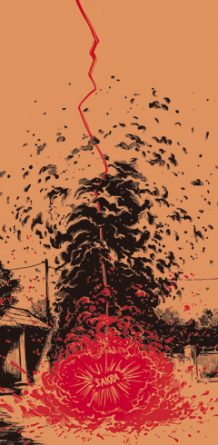






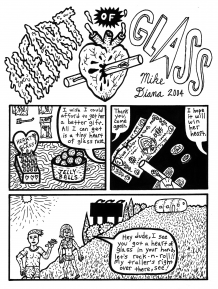




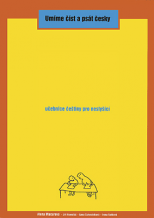
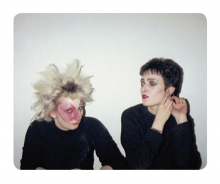
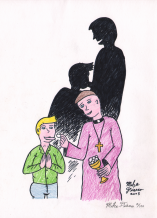



 We Are Rising National Gallery For You! Go to Kyjov by Krásná Lípa no.37.
We Are Rising National Gallery For You! Go to Kyjov by Krásná Lípa no.37.
Kommentar
Der Artikel ist bisher nicht kommentiert wordenNeuen Kommentar einfügen